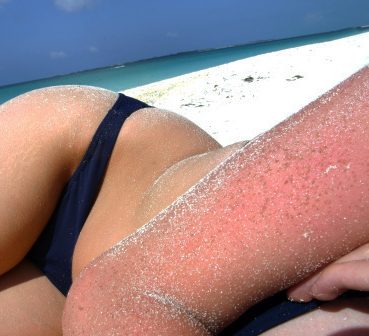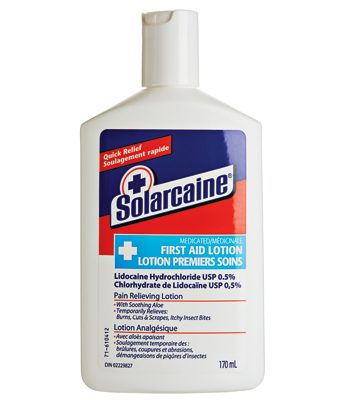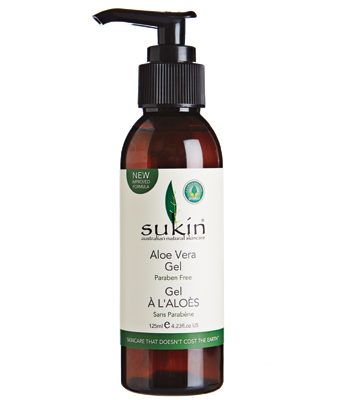
Sunburn season
By the time summer finally rolls around, most of us can’t wait to spend as much time as possible outdoors. That may explain why 35 percent of us get one or more sunburns a year. The familiar symptoms usually occur within the first 12 hours after too much sun exposure. There are two wavelengths: “UVA rays contribute to premature aging and play a role in the development of skin cancer, while UVB rays cause sunburns and have been linked to a major cause of skin cancer,” says Kalia. UVA activates melanin already present in your skin; UVB stimulates the production of new melanin as an initial defence mechanism, which creates the darker colour of a suntan. Many people can’t produce enough melanin for adequate protection. “Fair-skinned individuals who have red or blond hair and blue eyes are most at risk,” says Kalia, “but anyone can develop a sunburn.”
Once you have a sunburn, symptoms can get worse for up to 48 hours before the skin starts to heal, with full recovery taking one week or more. Not only can repeated sunburns accelerate skin aging, but a history ?of them, especially in childhood or adolescence, is also a risk factor for skin cancer.

Preventing a sunburn
The best way to protect yourself, says Kalia, is to avoid the sun, especially during peak hours-10 a.m. to 4 p.m. If you have to go outdoors, seek shaded areas and cover up with a hat and clothing that covers as much of your body as possible. Thirty minutes prior to sun exposure, apply a broad-spectrum sunscreen; the Canadian Dermatology Association recommends sunscreen with an SPF of at least 30. Reapply sunscreen every two hours, or more often if you are swimming or sweating. If your skin starts to redden or feel tender, go indoors or find shade at once.

When to go to the doctor
You should get urgent medical attention if the sunburn is blistering or is accompanied by fever, nausea, chills, confusion, dizziness, fainting, rapid pulse, rapid breathing or extreme pain, which could be signs of heat exhaustion or heat stroke. A severe sunburn can lead to second-degree burns, dehydration, shock or even death. Seek treatment if a burn shows signs of a bacterial infection (yellow pus draining from open blisters, or red streaks leading away from open blisters, or increasing pain and swelling) or if it does not improve after two or three days. Your doctor may prescribe a topical steroid or an oral or topical non-steroidal anti-inflammatory drug (NSAID) to reduce inflammation, swelling, pain and itching.

Drugstore sunburn remedies
Examples of Drugstore remedies: Solarcaine Medicated First Aid Lotion; Advil Tablets; Cortoderm Hydrocortisone Ointment 0.5%; Tylenol Regular Strength; Vaseline Original Petroleum Jelly
How they work: “Tylenol or Advil can help with the pain of a sunburn,” says Bonertz, “but Advil may be more effective because it also helps reduce inflammation.” It contains ibuprofen, an NSAID that prevents cells from releasing the prostaglandin compounds that cause pain and inflammation; Tylenol features acetaminophen, which lowers the brain’s perception of pain. “I also encourage the use of a bland, soothing ointment such as Vaseline petroleum jelly after the skin has cooled down, which helps the skin heal with less chance of scarring,” adds Kalia. Topical hydrocortisone, available over the counter in up to a 0.5 percent concentration, is a steroid that may reduce swelling, pain and itching (which occurs as the skin heals). The menthol and camphor in Solarcaine can also be soothing and relieve itchiness; the lotion also contains lidocaine, a local anesthetic that can be effective at temporarily reducing pain if applied over a small area (but some people may be allergic to it).
Need to know: Follow package directions when taking Advil and Tylenol, which will start to reduce pain (and in the case of Advil, inflammation) after about 30 minutes. Talk to your doctor or pharmacist before taking them if you are pregnant or breastfeeding; are taking another medication; or have high blood pressure, a stomach issue such as ulcers, or a heart, liver or kidney condition. Apply a thin layer of topical ointments such as Cortiderm or Solarcaine three or four times daily, but never on broken skin.

Natural remedies for a sunburn
Examples of natural remedies: Sukin Aloe Vera Gel; Homeocan Calendula + First Aid Cream; Now Solutions Shea Butter; Weleda Burn-Care
How they work: As for the natural products, “aloe vera [gel] or calendula cream can soothe the skin and help with healing,” says Gilchrist, and shea butter can help retain moisture, adds Bonertz. Weleda Burn-Care, which contains arnica and glycerine, is a natural alternative to petroleum jelly.
Need to know: Apply the natural topical remedies up to three times a day, but discontinue use if you experience any irritation after applying them to skin. You can also get relief by limiting physical activity, applying cool compresses and taking cool baths.
Related:
• 5 foods that fight sun damage
• 13 sun protection options
• Alternative sun protection options
